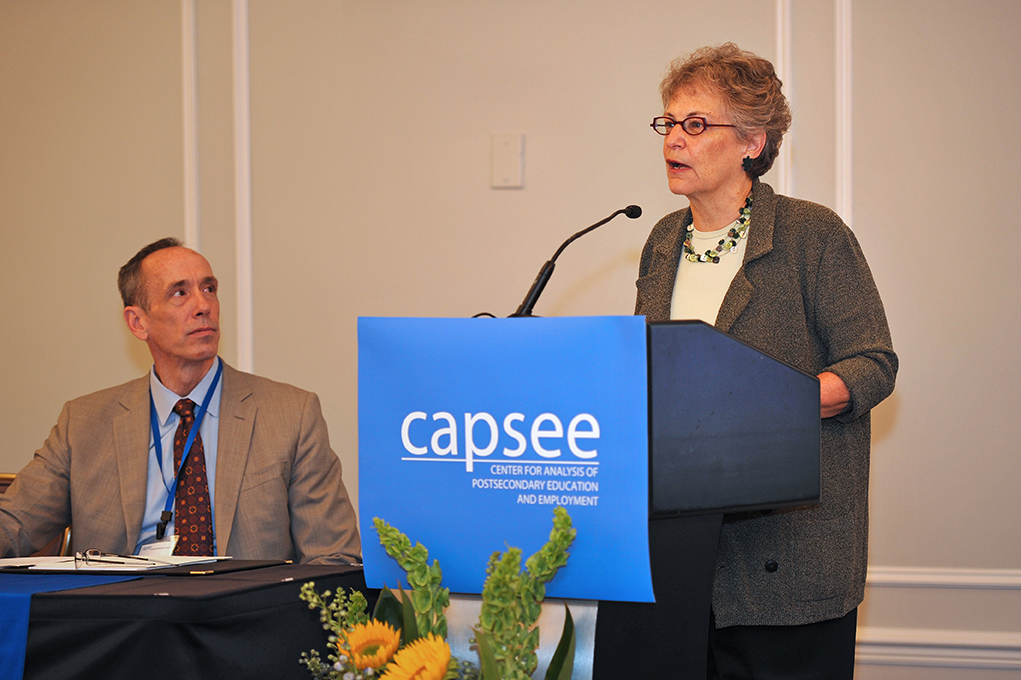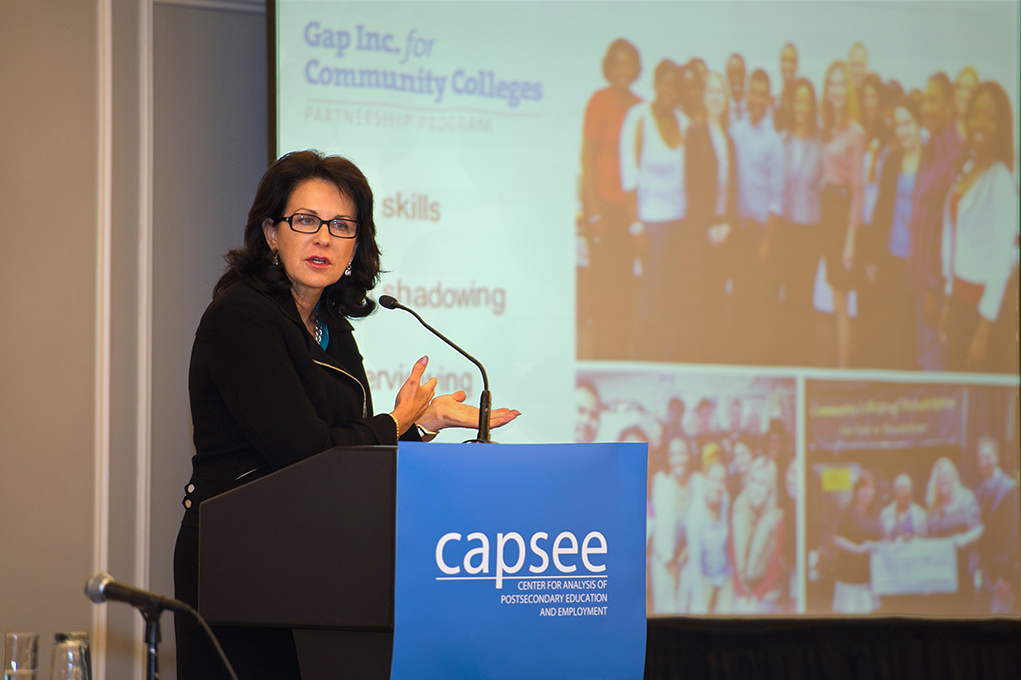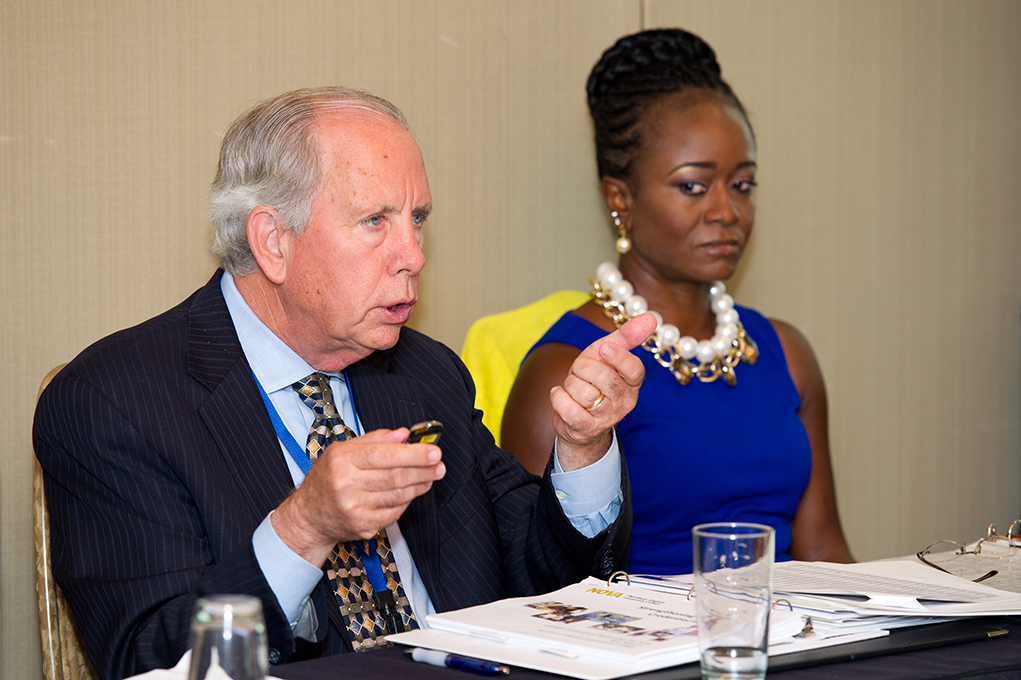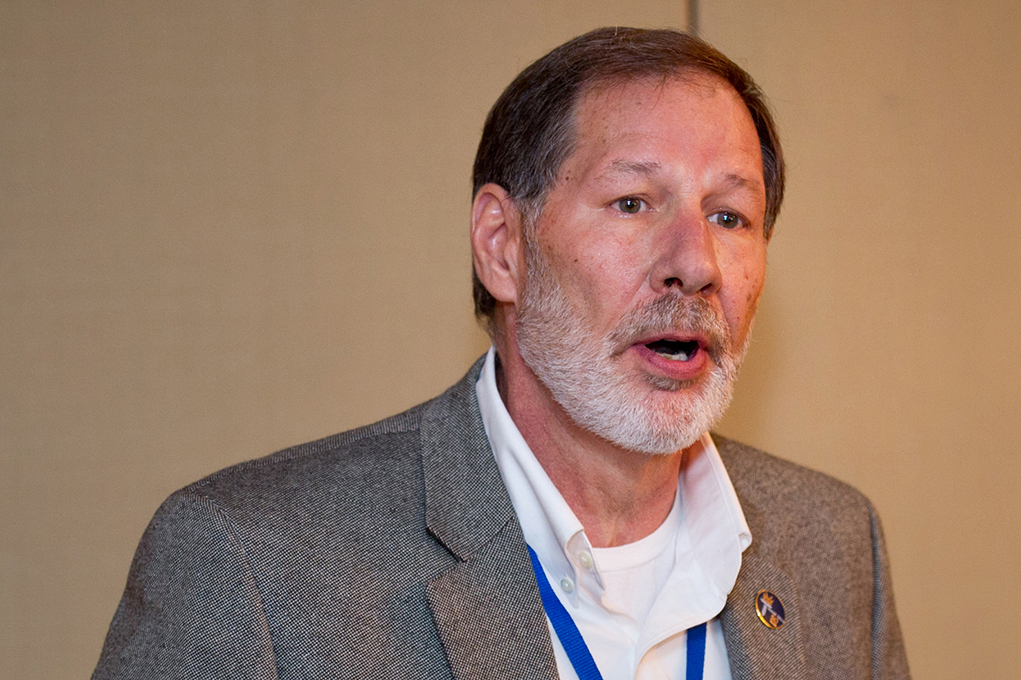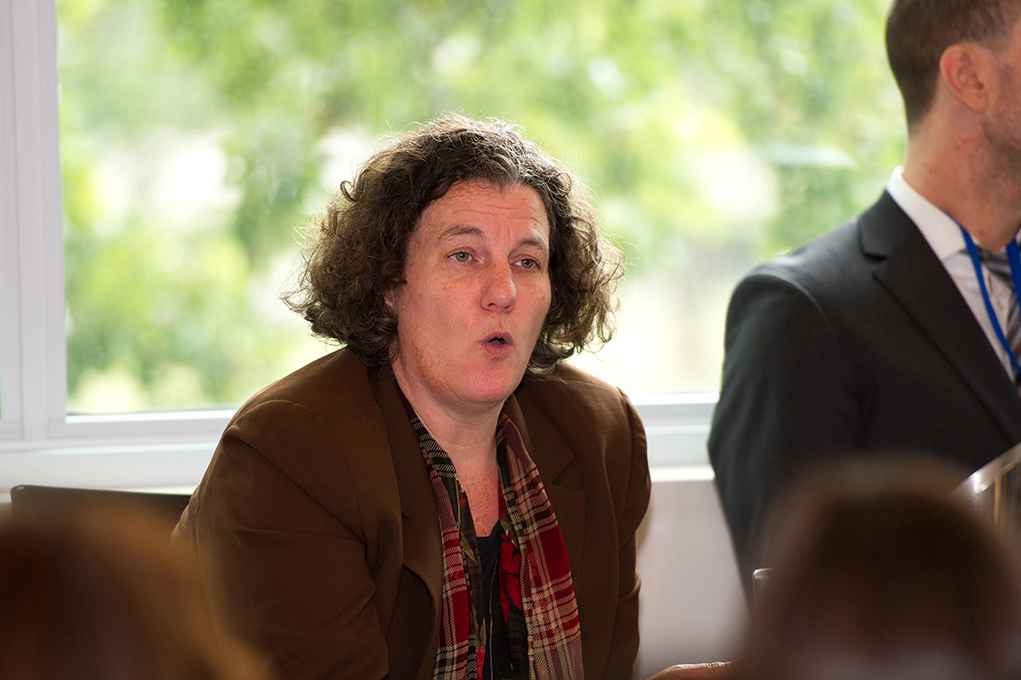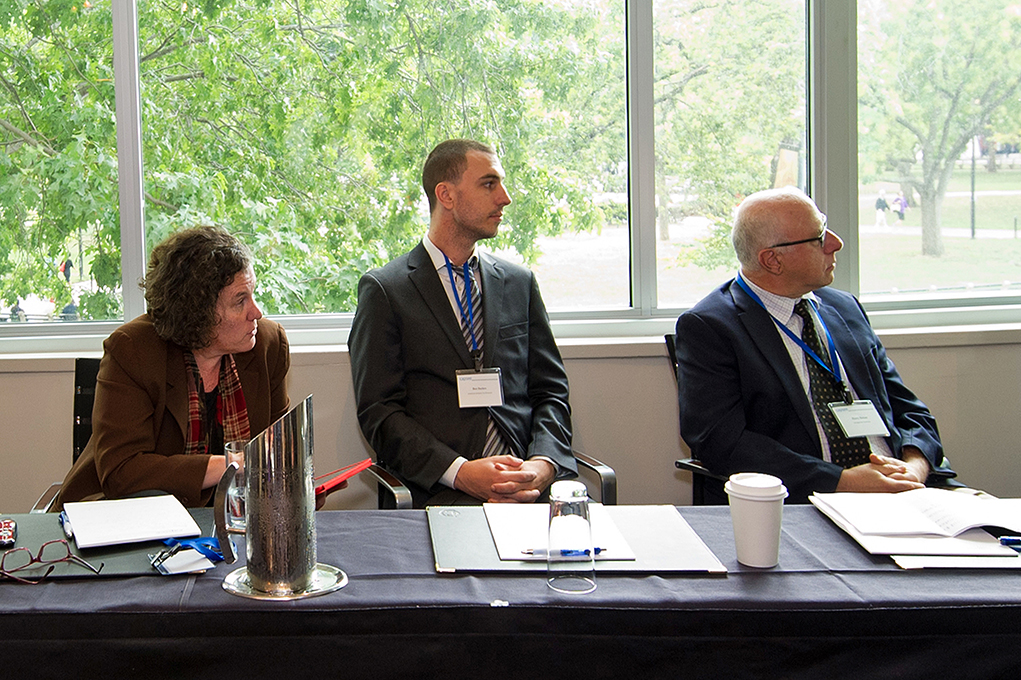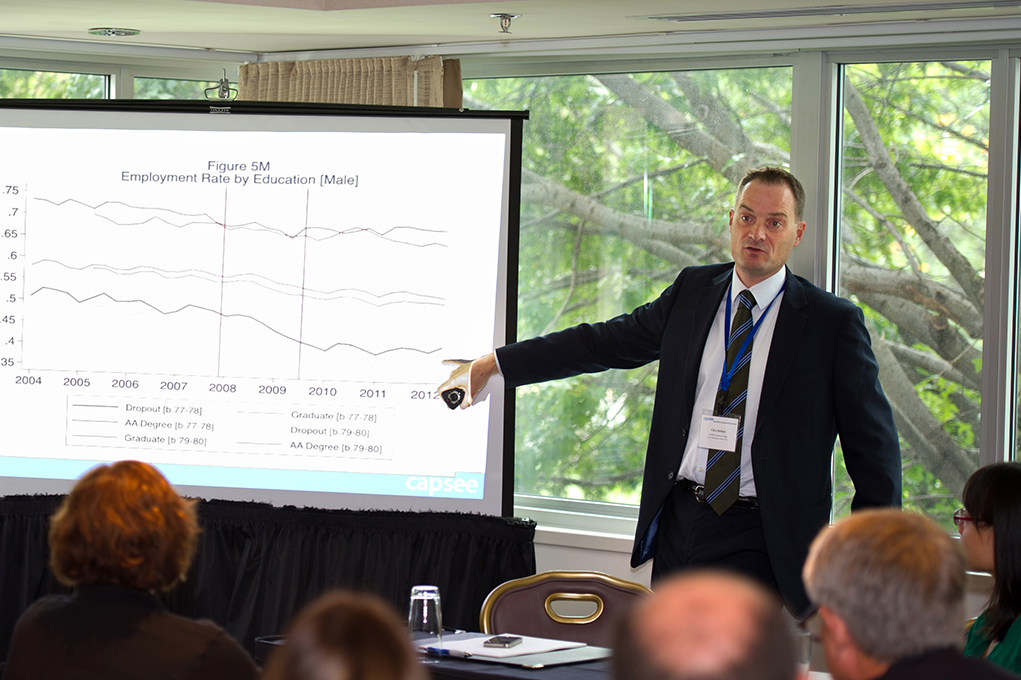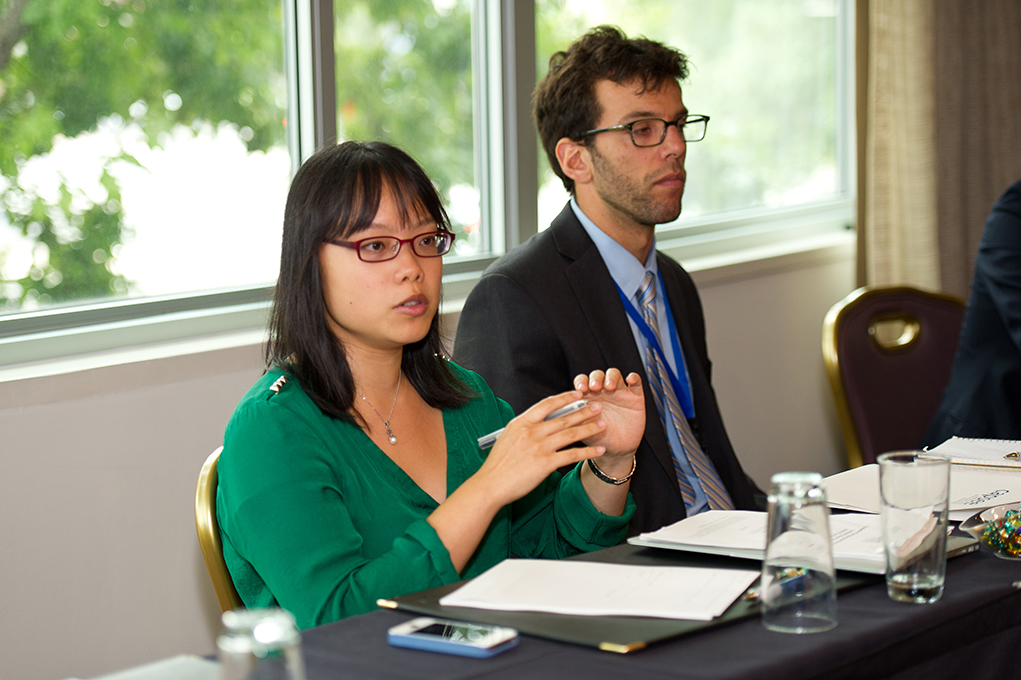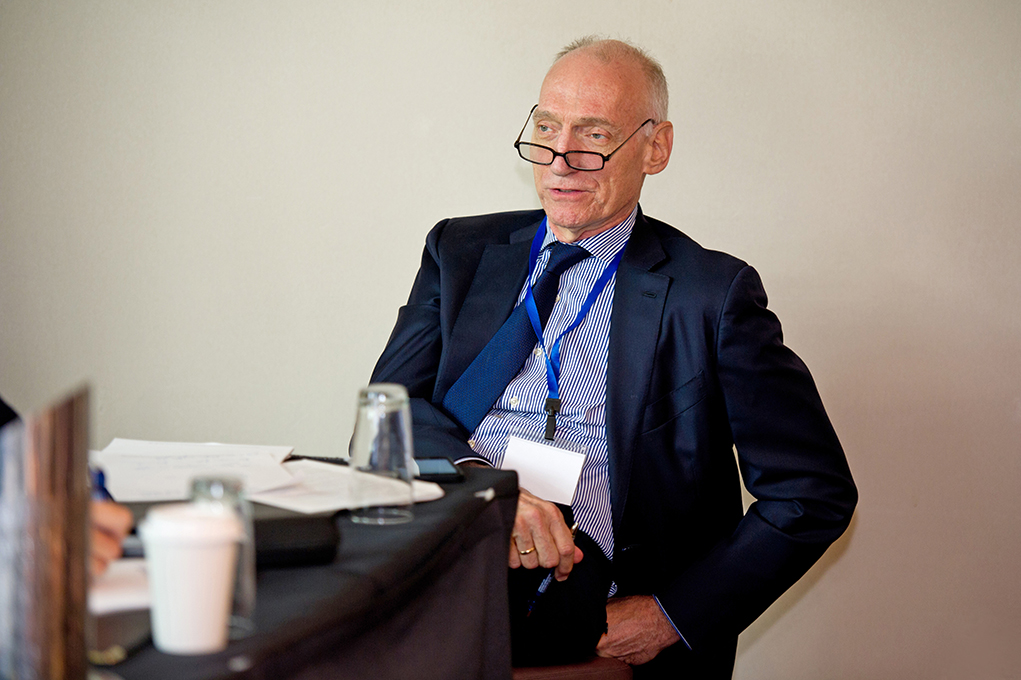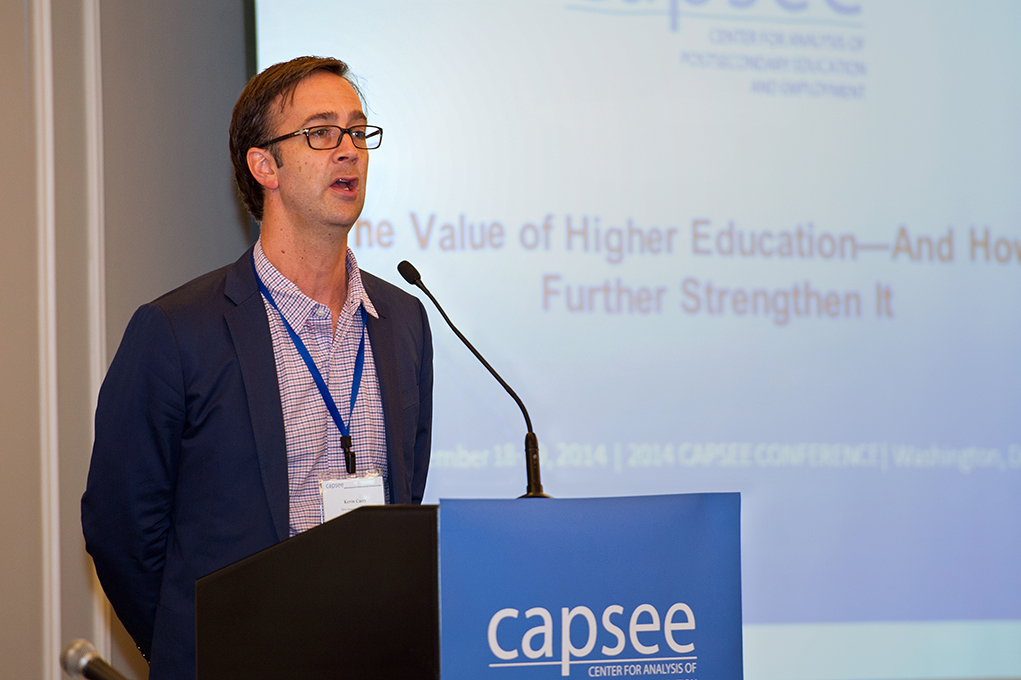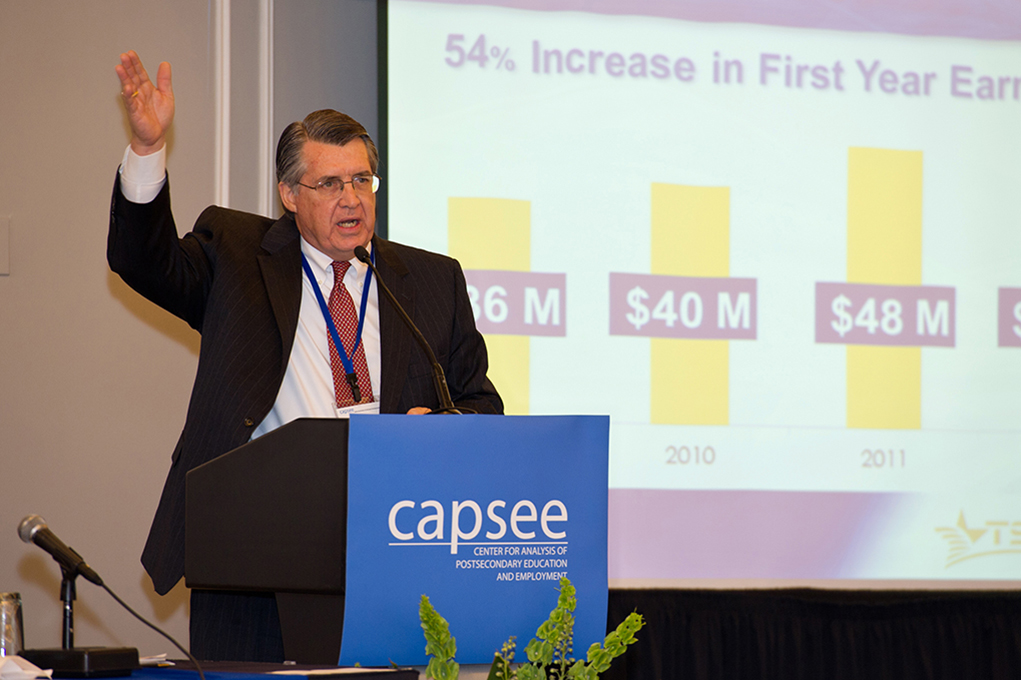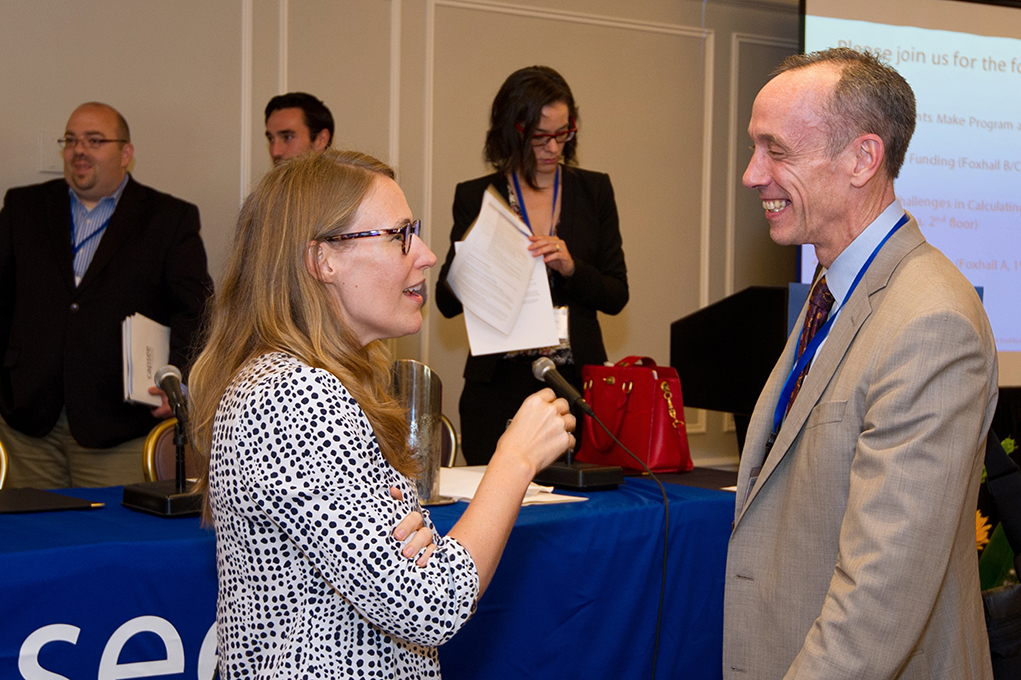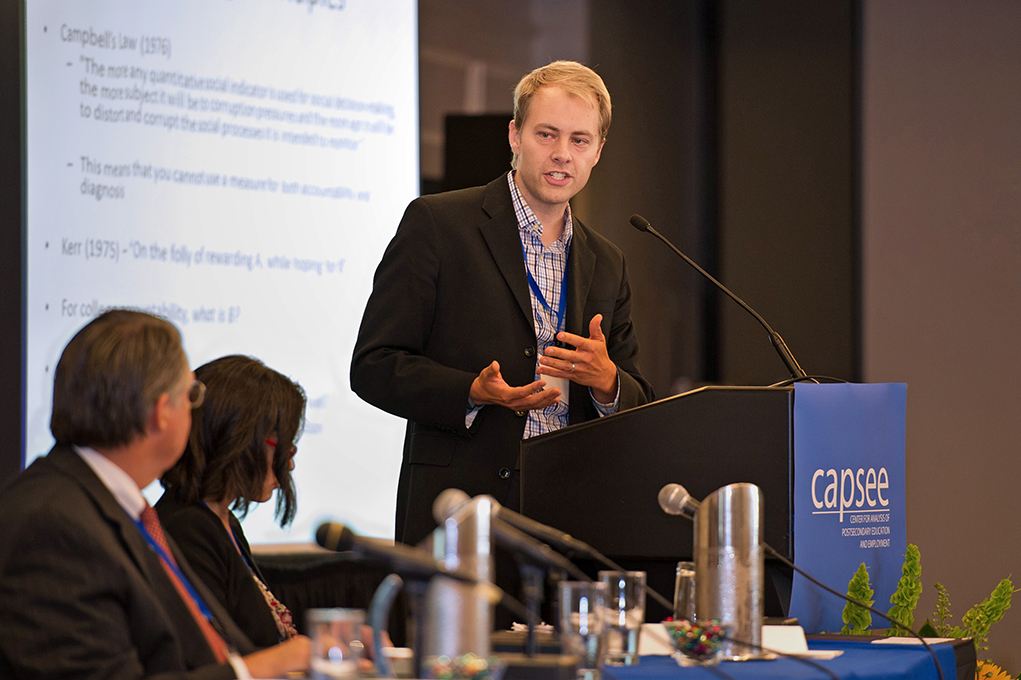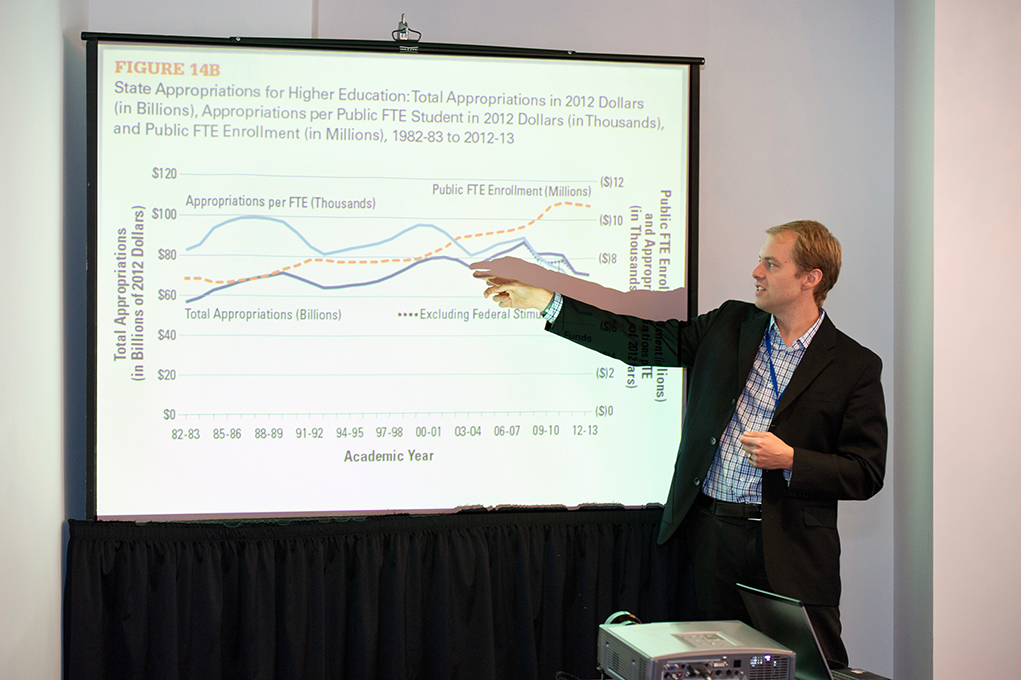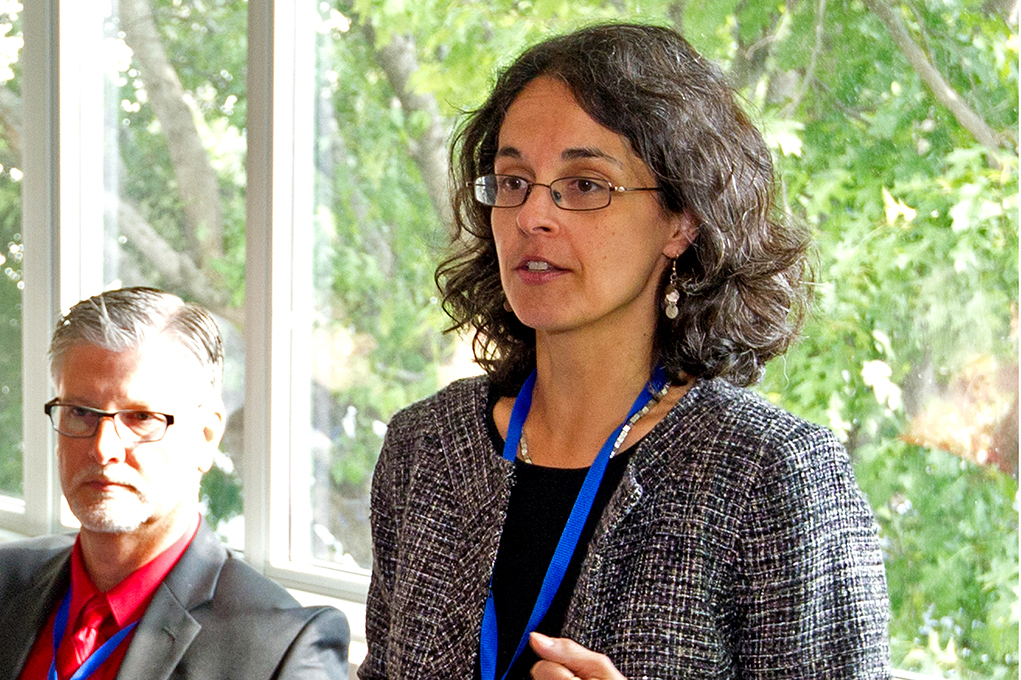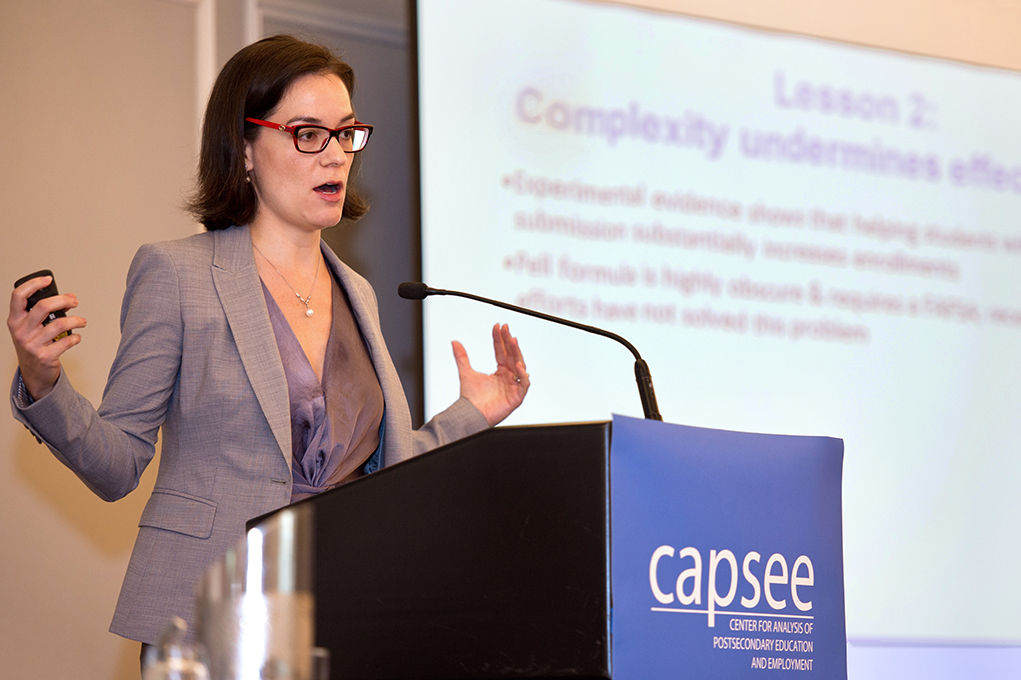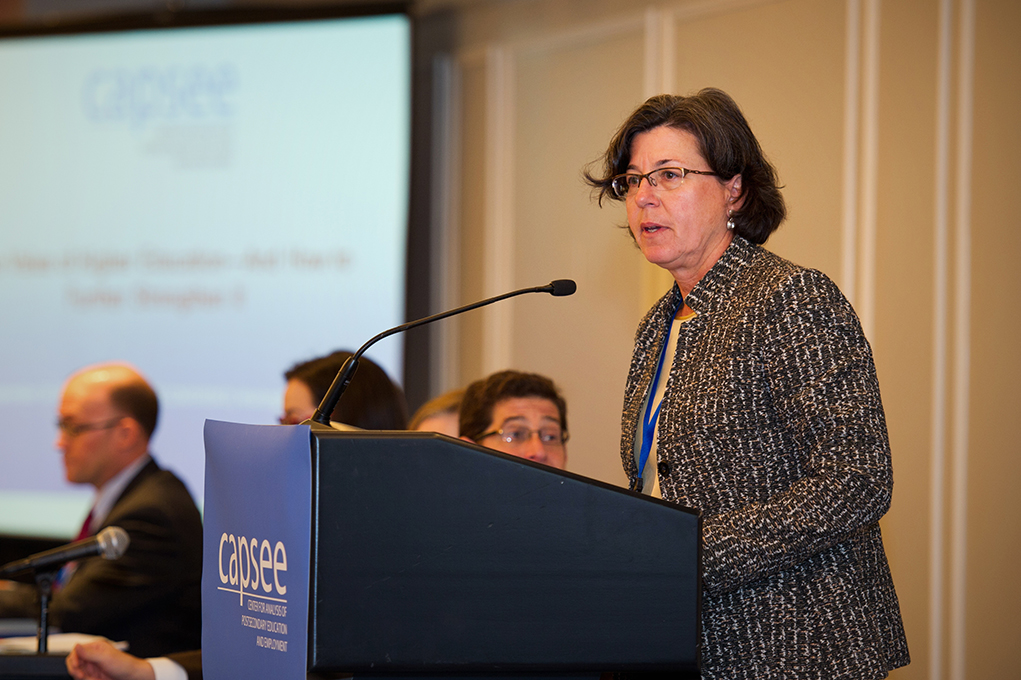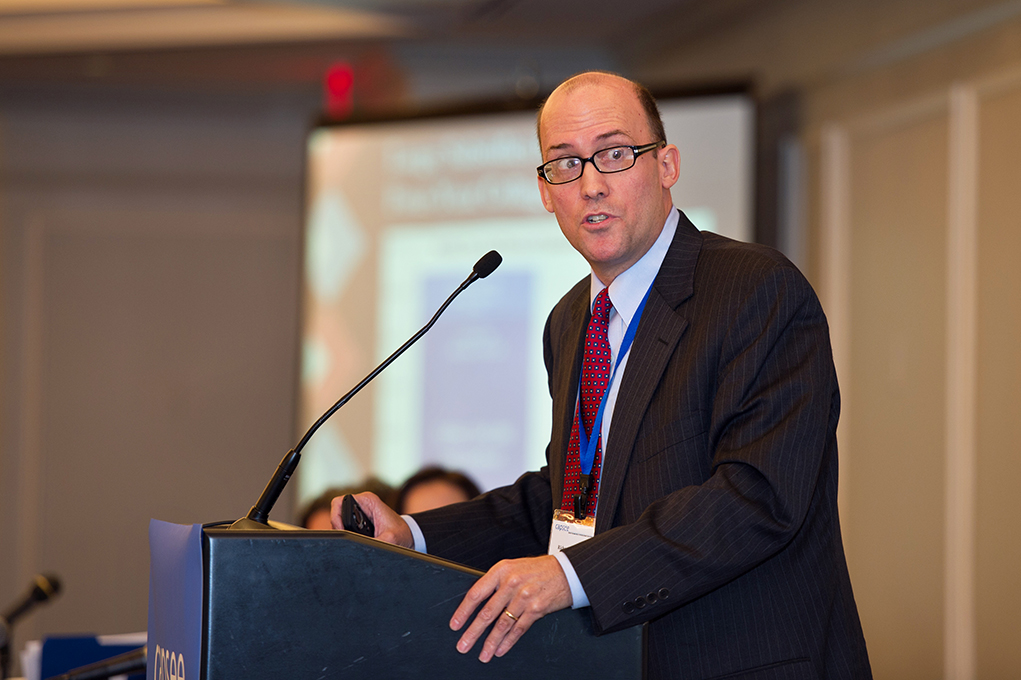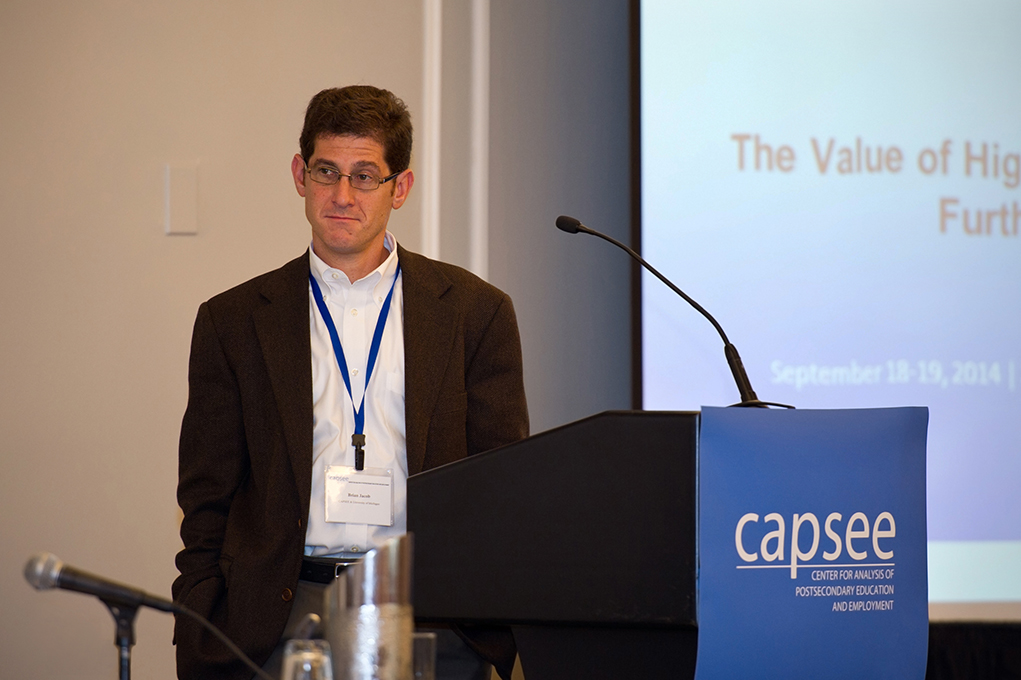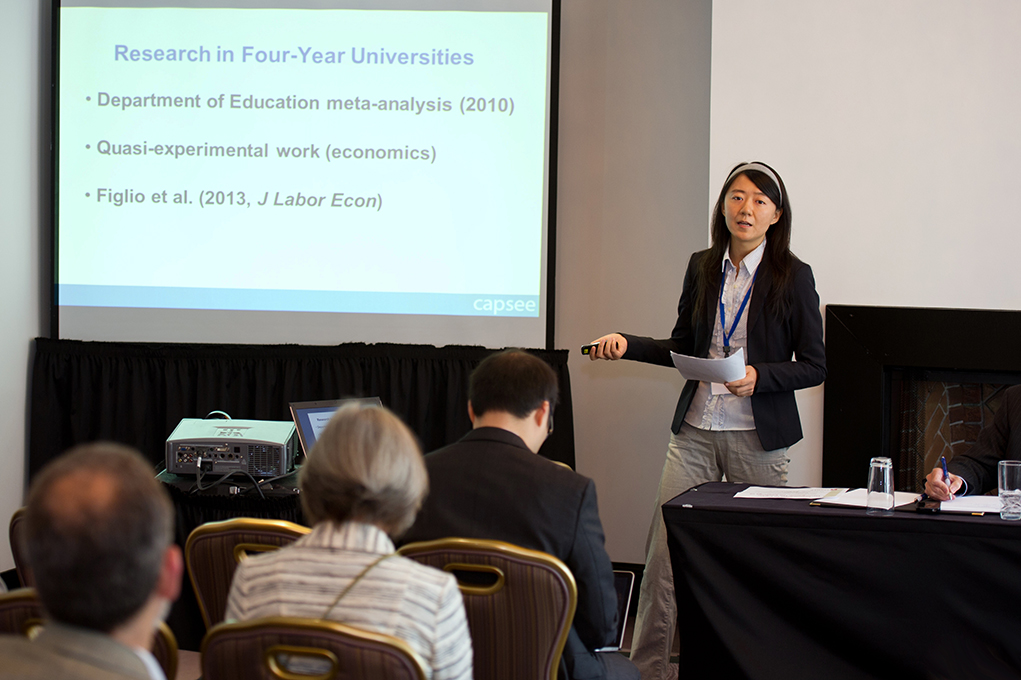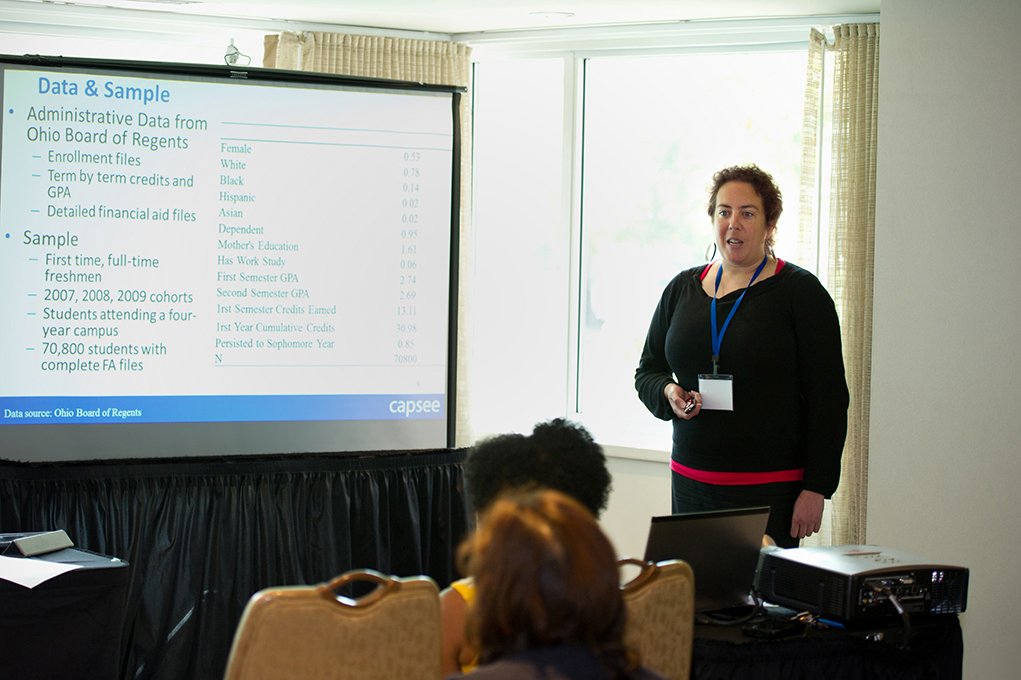Conference Highlights Growing Importance of Student Economic Outcomes as Measure of College Quality
NEW YORK, NY (Oct. 17, 2014)—Researchers, policymakers, and higher education leaders came together to discuss “the value of higher education—and how to further strengthen it” at CAPSEE’s September conference. Scholars from CAPSEE and elsewhere presented research on state-level labor market outcomes and federal financial aid programs; state agency representatives illuminated how they calculate and use labor market outcome data to inform higher education policy; and college leaders discussed how information on student employment outcomes helps them strengthen programs and pathways.
In his opening remarks, CAPSEE Director Thomas Bailey pointed out that higher education in the United States has never before been the focus of so much interest, but greater attention has brought increased criticism: Colleges are under attack for high costs and low completion rates. Yet, he stressed, CAPSEE’s research confirms that college continues to be a smart investment for most students.
The research on labor market returns for community college credentials across multiple states found broad areas of consensus: consistently high earnings gains that stayed strong through the Great Recession for most associate degrees; very large returns to almost all awards in allied health; significant returns to long-term certificates in other career-technical fields; and returns for short-term certificates that ranged from modestly positive but short-lived to negative. In one state, North Carolina, CAPSEE researchers analyzed the returns to accumulated college credits in the absence of a degree. The analysis revealed that even without the “sheepskin” of a degree, college credits yielded earnings benefits for students.
Nevertheless, state-level analyses revealed a striking variability in economic outcomes for different programs of study. In Florida and Michigan, earnings gains for students with associate degrees in the liberal arts were weak to nonexistent. The Florida study’s author, Harry Holzer of the American Institutes for Research, stressed the prevalence of low-income students in low-completion, low-return programs, and suggested that greater effort be made to steer students into programs that lead more reliably to well-paying jobs. But in another session, community college leaders from Virginia and North Carolina stressed caution when interpreting wage data: Some students who appeared to receive no earnings benefit from their credentials were in fact switching to less lucrative but more personally meaningful careers, such as early childhood education.
Overall, panelists emphasized that comparisons between colleges were far more meaningful at the program level than at the institutional level, even as they acknowledged that labor market outcomes were certain to play an ever-greater role in public systems designed to monitor and reward the quality of colleges and universities. As the New America Foundation’s Kevin Carey stated, “Higher education accountability for economic outcomes is going to happen; it is our job to make sure it happens well.”
The most dramatic example of college accountability for student employment outcomes was that of the Texas State Technical College System, which now receives funding based on the increase over minimum wage students earn after attending a technical college. As Michael Reeser, the system’s chancellor, stated: “We knew performance funding was coming, and we wanted to get out in front of it.” The advantage of the new system, Reeser explained, is that it stimulates innovation and increases program alignment to workforce needs. The system’s aggressive move toward awarding credits based on competencies rather than seat time is one outcome of the new funding formula.
The limitations in the available data were a common concern among the researchers. These include the inability to track students who move out of state, or are employed by the military and other federal agencies, and the lack of information on occupation, as opposed to field, in unemployment insurance data. However, as Nate Johnson of Postsecondary Analytics pointed out, “We will never have perfect data, but the research at this conference demonstrates that even with different datasets, different cohorts, and different methods, there are similar findings across states.”
In the closing plenary, the talk turned to whether students would benefit from the new information about employment outcomes for various programs of study. Several speakers posited that making more information available would not by itself help students make better choices about which institutions to attend or programs to pursue. Panelists agreed that better counseling for students was critical, and Georgetown University’s Anthony Carnevale stressed that the awarding of financial aid to students provided an opportunity to make contact with students and begin a conversation with them about choosing a college program that fits both their interests and their financial goals.
Visit our presentation downloads page for a description of all sessions and PDF versions of conference presentations.

